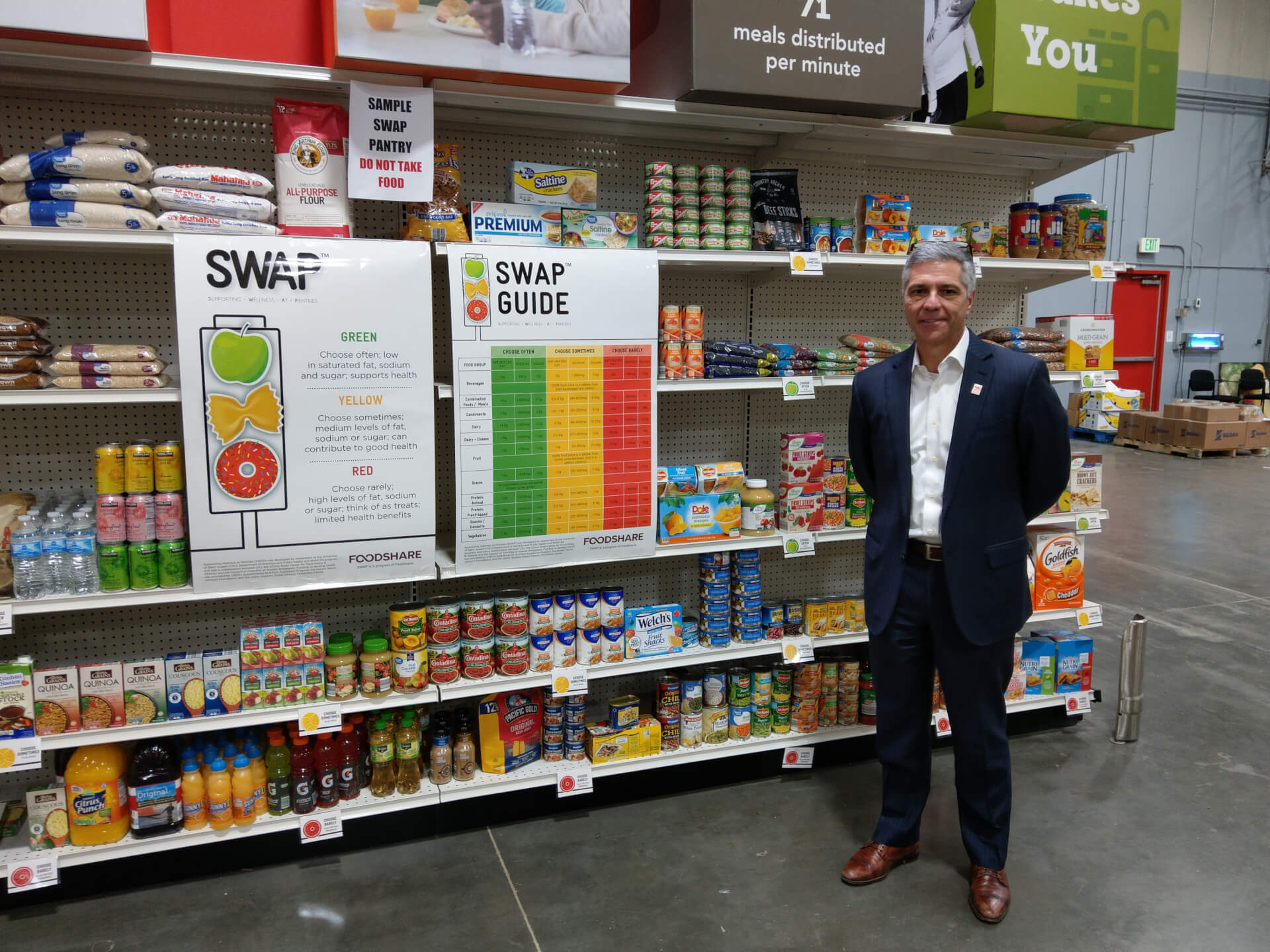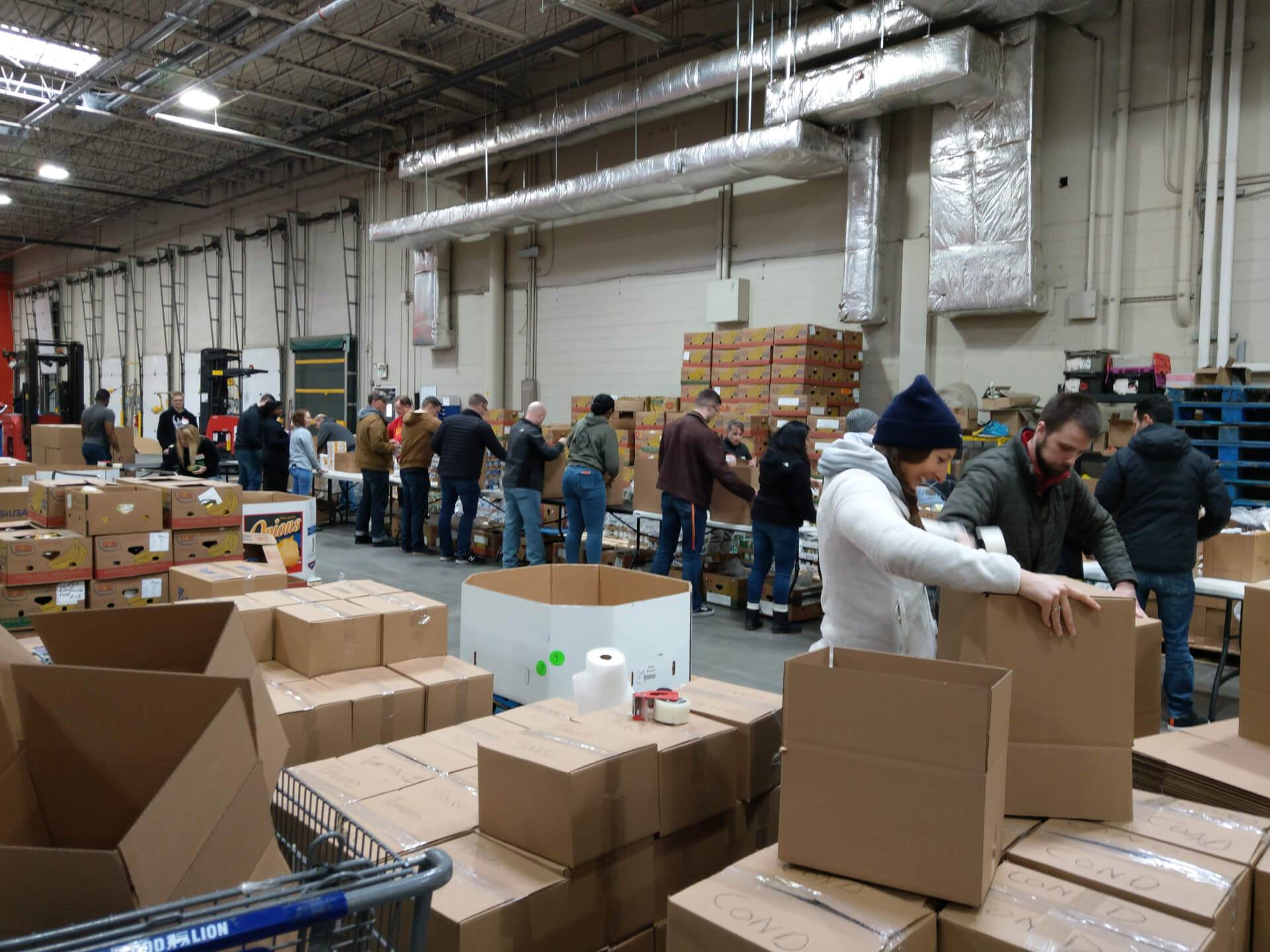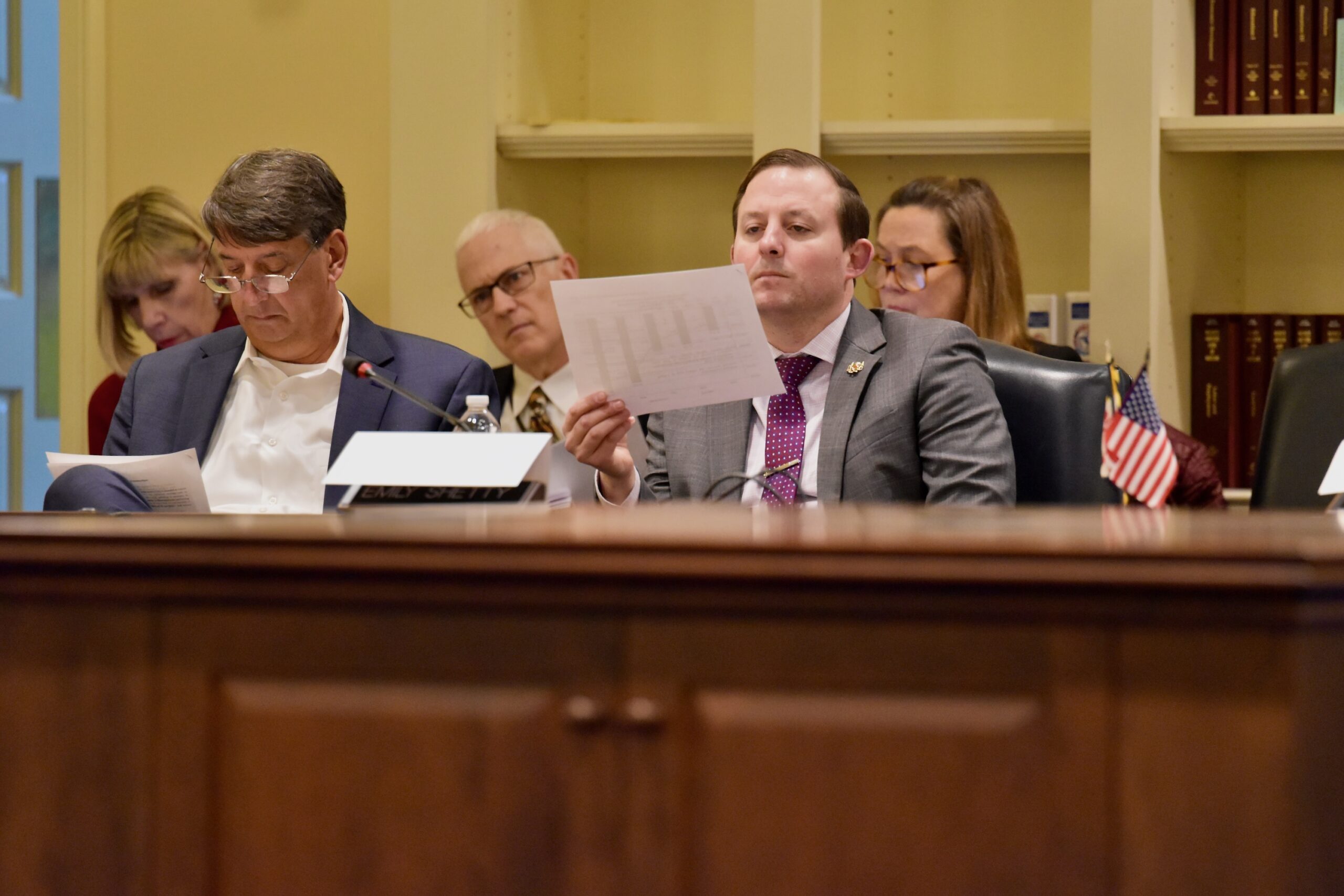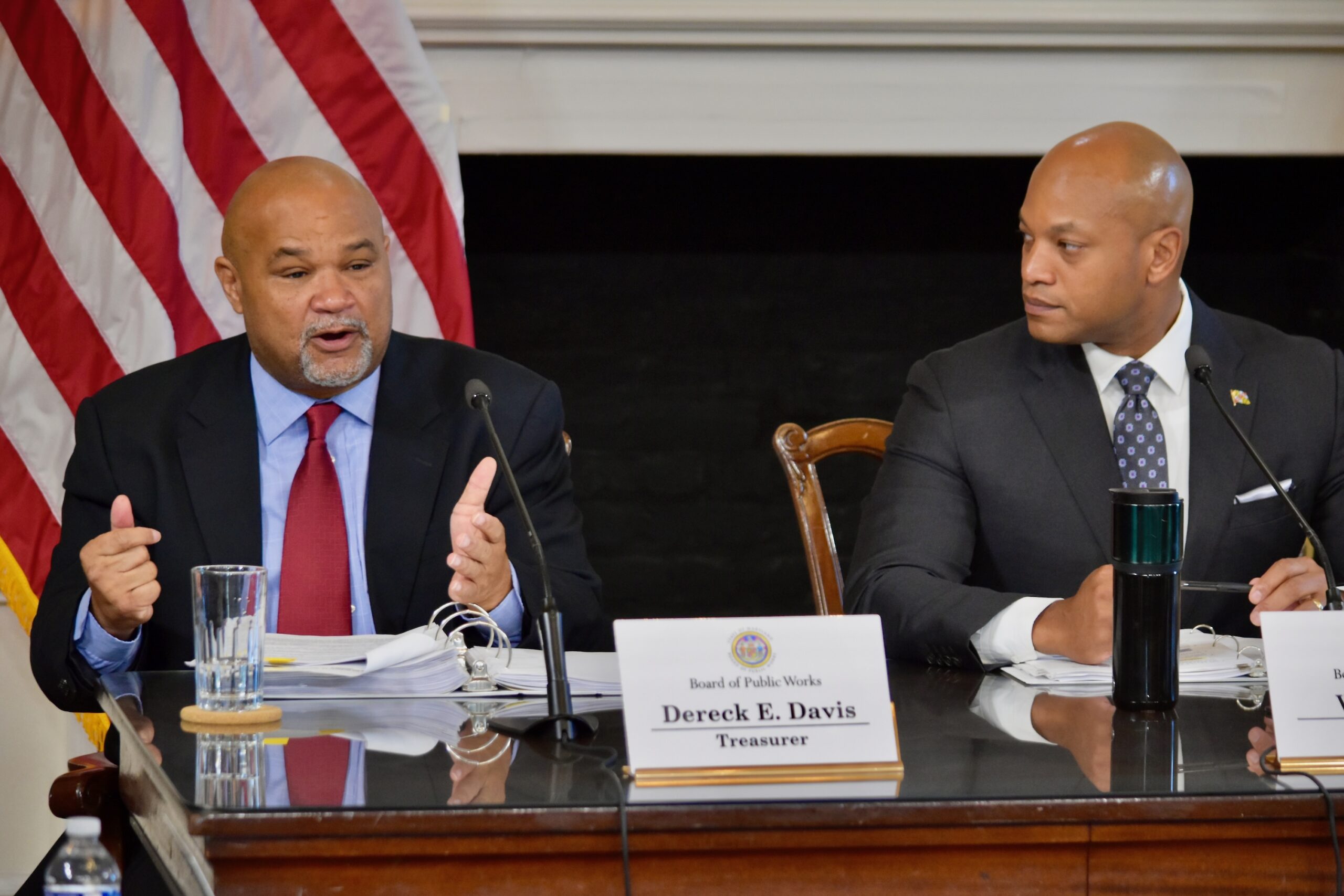Maryland Food Bank Imagines a Future in Which It Doesn’t Exist

The first thing that strikes you about the home of the Maryland Food Bank is the sheer size of its headquarters. Located in Halethorpe near an industrial park, the cavernous building sprawls over 120,000 square feet and its two-story high lobby looms over every visitor. It is decorated in typical corporate chic with a glass walled conference room on one side of the lobby and a massive reception desk on the other side.
Beyond the lobby are loading docks, huge coolers, walk-in freezers, and conveyor belts that move food in and out of storage areas.
To critics of the decades-long march in America to privatize hunger relief, the building is the architectural evidence of what has gone wrong. As one critic put it, “Food banks have become big business and big business profits from anti-hunger efforts.”
But to the food bank’s defenders its huge presence is a comforting bulwark against the enormous challenges our society faces.
“When the federal government shut down a couple of years ago and workers were not getting paid,” explained Pamela Brown, an ardent defender of the organization, ”the Maryland Food Bank set up stations with us all over our county to ensure that low paid fed workers at least had food.”
Brown, who as executive director of Anne Arundel County’s Partnership for Children, Youth and Families deals with the problems of poverty on a daily basis, says, “We are on the ground every day relying on partnerships with not-for-profits to fill in the gaps for this broken system.” And for her, the Maryland Food Bank is a key partner.

Volunteers pack boxes at the Maryland Food Bank in Halethorpe. Photo by Elliot Jaspin
But for those who work inside the building, its commanding presence belies a debate that is under way on how best to deal with hunger, a debate being led by Carmen Del Guercio, president and CEO of the food bank.
“I think [the food bank] has got a great 40-year history but there’s some things that we can do different and do better and more effectively going forward,” Del Guercio says. “This is about ending hunger. We’re not a food distribution organization. We have to think about ourselves as an organization that’s not going to be here 40 years from now.”
In Del Guercio’s telling, the Maryland Food Bank has to understand why people don’t have enough food and then try to solve those underlying problems. And when those problems are solved food banks will no longer be needed.
“As we begin to understand what the needs are, we would bring those other services into our pantry network. If it’s a transportation issue, it’s a housing issue, it’s a child care issue, that we bring those resources into that community so they can begin to address those root causes,” Del Guercio said.
But because this new approach is still a work in progress, the details are sketchy. If the Maryland Food Bank finds the problem is housing, what would the organization do?
“I don’t know again enough about let’s say housing in terms of what solutions might be available,” Del Guercio said. “We’re going to have to learn in terms of what we can and can’t ultimately deliver.”
In the meantime, the Maryland Food Bank continues to collect food donations from large companies like Walmart and ship it to food pantries around the state.
“We were about 725,000 food insecure when I first got here [three years ago] and now we are around 650,000, about a 10% drop,” Del Guercio said. “Nearly 40% of people we serve are working families having a hard time making ends meet. That’s why, despite a strong economy, the number has not come down as much as most people expect.”
And the fact that there are so many working poor leads critics to argue that organizations like the Maryland Food Bank are actually helping companies like Walmart to keep wages low. According to state records, because of its low wages a disproportionate number of Walmart employees are on food stamps. Presumably they are also among those using food banks to make ends meet.
Del Guercio agreed that Walmart is one of the largest providers to food banks nationally but “that doesn’t preclude organizations to stand for higher minimum wages as a way to solve the hunger problem.”
“I think it kind of puts too fine a point on something that’s much broader,” Del Guercio said. “I don’t know the hiring practices of most organizations that happen to support us and what their wages are and what’s competitive for a particular industry. It’s hard for me to say where you draw the line and say we’ll accept from one and not from another because of certain aspects of their corporate position.”
Adding to the problem is that corporate food donations are typically of items that have either not sold or will soon be out of date.
To winnow out spoiled or out of date food, the Maryland Food Bank has organized an army of volunteers who stand along conveyor belts sorting through the donated food. Del Guercio says that in any one year there are approximately 7,500 individuals who help organize the distribution of food. And given the array and quantities of food, Del Guercio admits that inevitably there are mistakes.
“We are distributing 45 million pounds of food during the course of a year. So is there something that is going to get out that is less than ideal? I would never say it doesn’t happen.” Del Guercio said But he added that the Maryland Food Bank, in addition to collecting donated food, is also buying fresh food. He estimates that 30% of the food bank’s budget is going to such purchases.
“Historically, the most what we’ve been focused primarily on is to give them the best quality food we could,” Del Guercio said. But now he says it is time to find longer term solutions.


 Creative Commons Attribution
Creative Commons Attribution